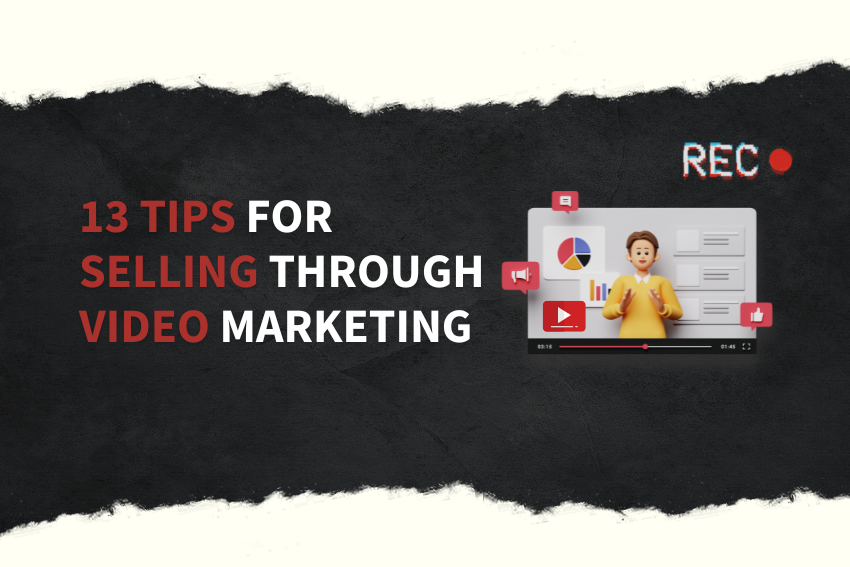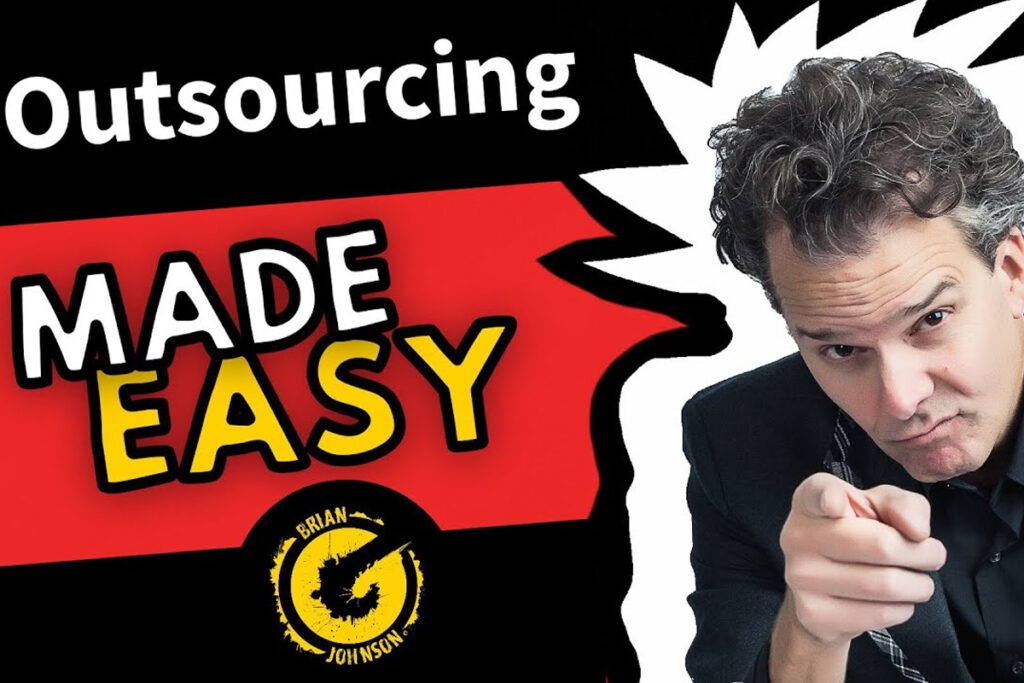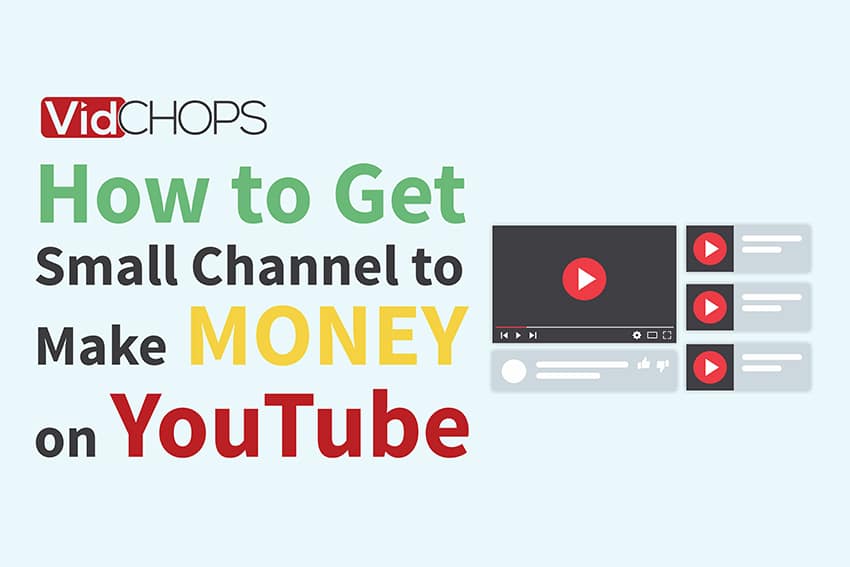How Top Video Creators Turn Simple Views Into 7-Figure Businesses
We break it all down on The Video Creatr Show, click the link below.

In today’s growing digital age, selling a product or service through video is one of the most effective sales tools. As more and more people consume video, companies are realizing the sheer power of video marketing due to the growth of TikTok and YouTube.
There are many benefits to using video. For instance, it has a fantastic way of conveying messages, emotions, and a lasting impact.
As a result, video has become the preferred marketing method for many companies—especially TikTok and Instagram reels as they seek new customers and brand awareness.
In this article, we’ll show you how to sell your product and service through videos and why it’s so important:
- Why Use Video?
- 1. Know Your Audience
- 2. Define Your Goals
- 3. Plan Your Video Content
- 4. Optimize Video length and Structure
- 5. Use Good Visuals and Audio
- 6. Build Trust
- 7. Have a Powerful CTA
- 8. Promote Your Videos
- 9. Monitor Your Performance
- 10. Experiment with Different Trends
- 11. Make Your Videos Personal
- 12. Use Social Proof
- 13. Use SEO Techniques
- Top Mistakes Companies Make When Creating Videos
- Use Video Marketing To Promote Your Brand
Why Use Video?
First, let’s look at why video is crucial for any company looking to grow its business.
Video is one of the most versatile forms of communication. Due to its auditory and visual nature, video is significantly more captivating—if made properly—than static images.
Video content also lets you tell fascinating stories, showcase product features, and create an immersive experience that resonates with your audience.
In addition, the video content combines the power of sound, visuals, and storytelling messages—thus leaving a lasting impression on viewers.
Here is a step-by-step guide to selling through video:
1. Know Your Audience
Before you pull out your video camera, you must know your target audience. Ask yourself this fundamental question: Why does my audience want to buy this product or service? You’ll need to identify your needs, pain points, and preferences.
Furthermore, conduct market research, read customer feedback, and create buyer personas to build key insights into their behaviors and motivation.
If you understand these key metrics, you’ll be able to craft videos that resonate with your audience and address their concerns.
2. Define Your Goals
You must also clearly define your goals for every video. For example, are you looking to generate leads, boost customer conversions, or build brand awareness? Or, are you looking to achieve all three?
Once you’ve clearly defined your goals, you must identify the messages you want to convey. Henceforth, create a compelling value proposition and unique selling points (USP) that differentiate your service and product from the competition.
In addition, you should also match your messages with the needs of your audience. Then, double down on the benefits so they know what you’re offering.
3. Plan Your Video Content
Once you understand your target audience and know your goals, planning your video content is arguably the most important part of the process.
You’ll need to determine the video format, such as product demonstration, customer testimonial, or educational content, that perfectly aligns with your goals.
You also need to create a storyboard and script that outlines the flow of your video, including the intro, main section, and CTA.
4. Optimize Video length and Structure
In the growing digital world, people have limited attention spans. Therefore, you need to keep your videos focused and concise. Aim for a length that carefully delivers your message without losing viewers’ focus.
Generally, shorter videos of under two minutes do the best. But in some cases, longer videos that showcase a prolonged story can also be effective. You should structure your video with a solid hook at the start to get the viewer’s attention.
After that, deliver your main points clearly and succinctly with a strong call to action at the end to ensure they buy your product or service.
5. Use Good Visuals and Audio
One of the most captivating parts of the video is the visuals and audio. These elements play a crucial role in keeping the attention of the audience. Therefore, you need to invest in high-quality audio with the right lighting.
It should also include text animations, appealing graphics, and B-roll footage to enhance your message.
Likewise, you may decide to incorporate background music or voiceovers to make a happy viewing experience. However, remember to balance engaging visuals with informative content. That’s how you create a robust sales focus.
6. Build Trust
If you’ve ever worked in sales, you’ll know that trust is utterly crucial for getting the deal over the line. You must also build trust through your videos—and the way to achieve this is via transparency.
Moreover, you should avoid overly promotional content because viewers don’t always appreciate being directly sold to. Instead, you should focus on providing value and solving customer problems.
You also demonstrate your industry knowledge and expertise by giving informative tips, and educational content, and sharing success stories. Instead of placing yourself as a pushy salesperson, make yourself the trusted advisor.
7. Have a Powerful CTA
Marketing is all about having a successful call to action (CTA). Every sales video you make should also have a clear CTA to help viewers to make the next step.
That could be one of many options: Directing them to the website, offering a free trial if they sign up, and encouraging them to make a purchase.
However, the CTA should be simple to understand. You should also clearly communicate the benefits of taking action and build a sense of urgency. This could be through exclusive incentives or limited-time promotions.
Most importantly, make the CTA convenient for viewers to act by including clickable links or contact information.
8. Promote Your Videos
Once you’ve created your videos, you may need to promote them to achieve the required success. Therefore, leverage social media platforms, email marketing, and your website to share your videos with your existing audience.
Furthermore, you can look at paid advertising options, including YouTube and social media ads, to boost your overall reach. You can engage your viewers through direct comments and respond promptly to inquiries to foster a feeling of community within your audience.
9. Monitor Your Performance
Another important aspect of selling through video is to monitor your performance through video analytical tools. You can track metrics like click-through rates, views, and engagements to see what works for your brand and what you can optimize.
Furthermore, you can A/B test different video elements, such as CTAs, thumbnails, and titles, to find the most effective strategies.
After that, use the data to refine your video content, overall marketing strategy, and distribution channels.
10. Experiment with Different Trends
Video and consumer trends are always changing and evolving. Therefore, stay with the current video marketing trends, industry developments, and emerging platforms.
Experiment with new video formats, storytelling approaches, and techniques. You should regularly evaluate your video strategy to ensure it’s correct for the current time.
11. Make Your Videos Personal
When the sole purpose of your videos is to sell, you need to ensure it’s entirely personal. Therefore, make specific parts of the video about the pain points of your customer. You should also talk about their interests and challenges.
By adding excellent personalization to your videos, you show that you’re concerned about your viewer. In turn, you create a much more significant connection with them, resulting in a higher chance of sales.
12. Use Social Proof
The concept of social proof is crucial when you’re trying to achieve sales, and it’s no different when you’re creating video content. As a result, ensure you use social proof—such as previous client reviews—to convey a sense of trust.
In addition, social proof is brilliant highlighting how your product has helped others. So try to provide tangible evidence of its value.
13. Use SEO Techniques
If you’re putting your video onto popular video hosting platforms like YouTube and TikTok, you’ll need to use good SEO techniques. This means optimizing your video titles, tags, and descriptions with relevant keywords.
Likewise, transcribe the video to make it more accessible to a wider global audience. Use best SEO practices to make sure your videos are discoverable and your sales will rapidly increase.
Top Mistakes Companies Make When Creating Videos
There are many mistakes companies make when creating videos for marketing purposes. Here are some of the most common:
- Poor brand consistency: Your video must stay true to your brand to boost sales. Failure to do so can create a lack of transparency and trust.
- Not using SEO: Having good SEO tactics can take average videos into viral sensations.
- Poor promotion: Making a good video is not enough; you also need to promote it clearly and thoroughly.
- No story: A video isn’t good unless it has a good story that somehow links to your brand.
- Poor planning: Like all creative tasks, you need to plan to allow everything to come together. Not planning your video will often result in weak content.
Use Video Marketing To Promote Your Brand
If you’re looking for a dynamic and effective way to promote your brand and sell a product or service, video marketing is one of the most proven tactics.
If your company needs high-quality video editing—VidChops has the perfect service for you. You’ll get a dedicated editor, unlimited video requests, and a 48-hour turnaround time.




